Whitby Abbey
OS grid reference:- NZ 893 109
Whitby's skyline is dominated by the haunting ruins of St. Hilda's Abbey, standing stark against the skyline high on on the East Cliff. There are two ways to approach the Abbey, from the car park to the south, or from Whitby town itself via 199 winding and very steep steps.
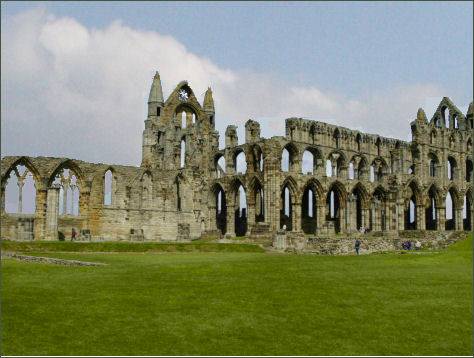
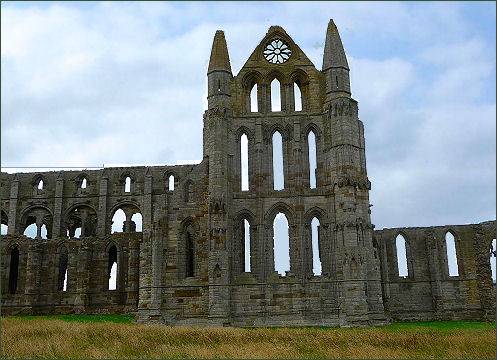
The abbey was founded in 651 A.D., by Oswy, king of Northumbria (circa 612 - 15 February 670), a devoted Christian, who promoted the faith among his subjects and establishing a number of monasteries. He had defeated a pagan opponent, Penda, in battle two years prior to founding Whitby Abbey. Oswy appointed Hilda (circa 614-680), the abbess of Hartlepool Abbey, , as its first abbess. Described by the Venerable Bede as a woman of great energy, who was a skilled administrator and teacher, Hilda was also the grand-niece of Edwin the first Christian king of Northumbria.
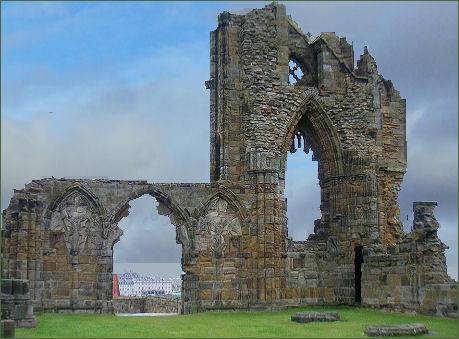
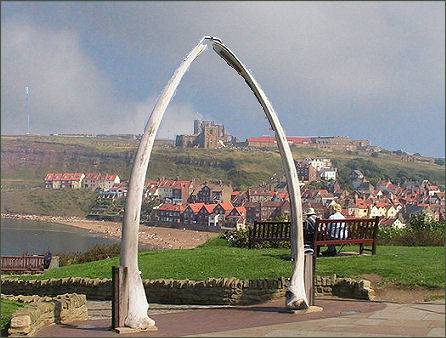
The name Streoneshalh is believed to signify Fort Bay or Tower Bay in reference to a supposed Roman settlement or Roman Signal Station that previously existed on the site. In 664, the abbey was the site of the Synod of Whitby, at which the Northumbrian Celtic church was reconciled with Rome. The double monastery of monks and nuns was home to the great Northumbrian poet Cędmon.
Streoneshalch was laid waste by the Vikings in successive raids between 867 and 870 under Ingwar and Ubba and remained desolate for more than 200 years. Little remains of the great Anglo-Saxon abbey, but near the nave are several tombstones which were excavated in the 1920s. These date back to the Saxon era, and are remnants of the first abbey to occupy the site.
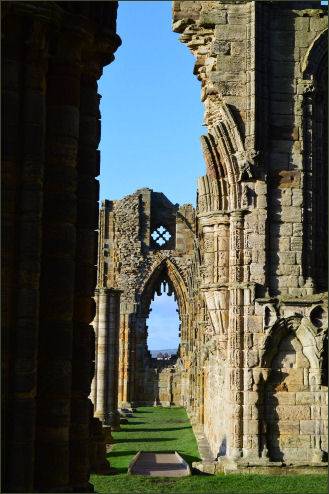
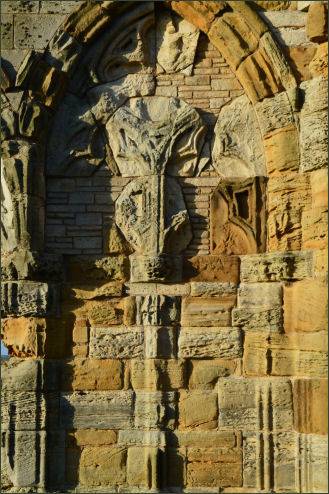
In the late eleventh century. Reinfrid, a soldier monk came to Whitby with orders to rebuild the abbey from his protector, the Norman William de Percy. Reinfrid died around 1087 in an accident whilst helping workmen build a bridge. By 1220, Whitby Abbey had become one of the wealthiest monasteries in England. The abbey continued as a place of monastic life until the dissolution of the monasteries by Henry VIII. It was surrendered to Henry VIII's commisioners in 1539 by William Davell, the last abbot of Whitby. Though the abbey fell into ruin, it remained a prominent landmark for sailors.
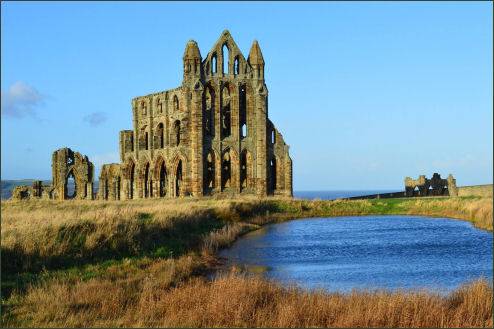
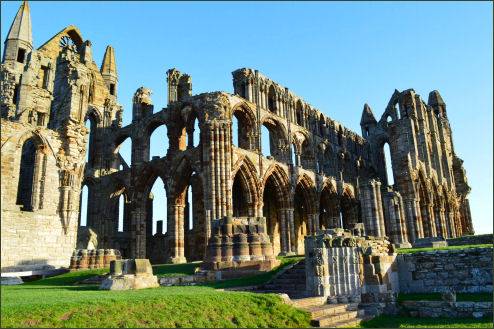
Whitby Abbey was made famous by Bram Stoker as a key location in his Dracula tale. Stoker, while staying at the Royal Hotel on the Whitby's West Cliffs, would have had an excellent view into the town and across to the haunting ruins of Whitby Abbey which stands broodingly on the cliffs. Stoker's Dracula is shipwrecked off the Yorkshire coast, then comes ashore in the guise of a black dog, known to be one of the many forms into which a vampire could transform itself and wreaks havoc on the town. Stoker writes, "It is a most noble ruin, of immense size, and full of beautiful and romantic bits.... Between it and the town there is another church, the parish one, round which is a big graveyard, all full of tombstones".
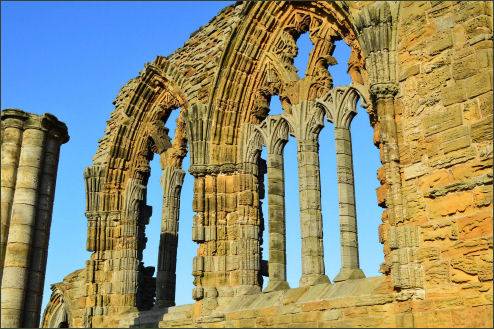
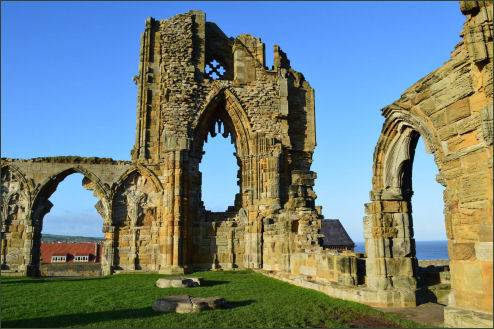
During the First World War Whitby Abbey was shelled by German battlecruisers who were aiming for the signal post on the end of the headland. The Abbey sustained considerable damage during the ten minute attack. The ruins are now owned and maintained by English Heritage.
